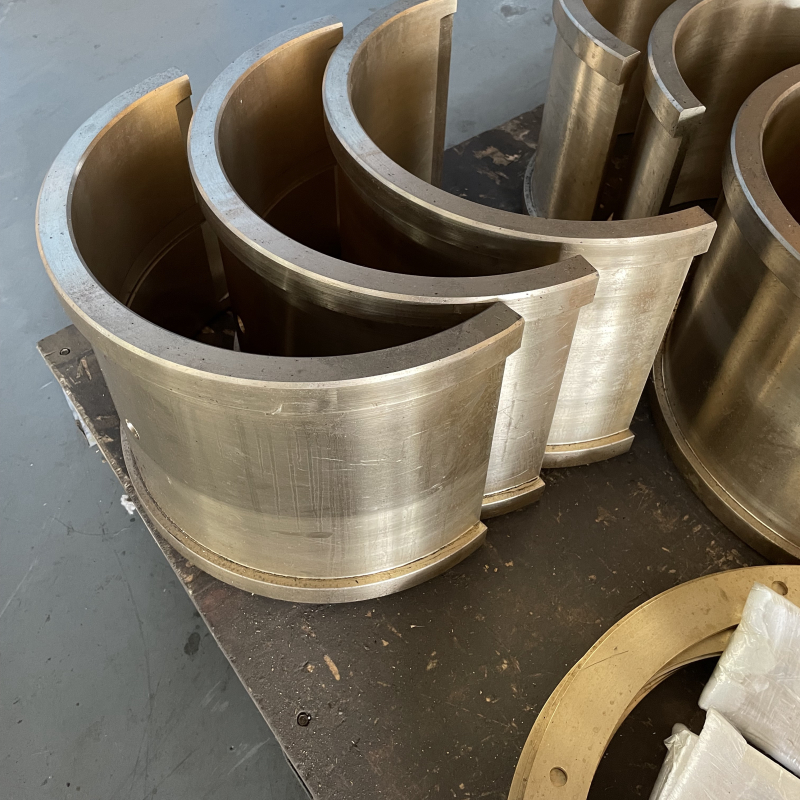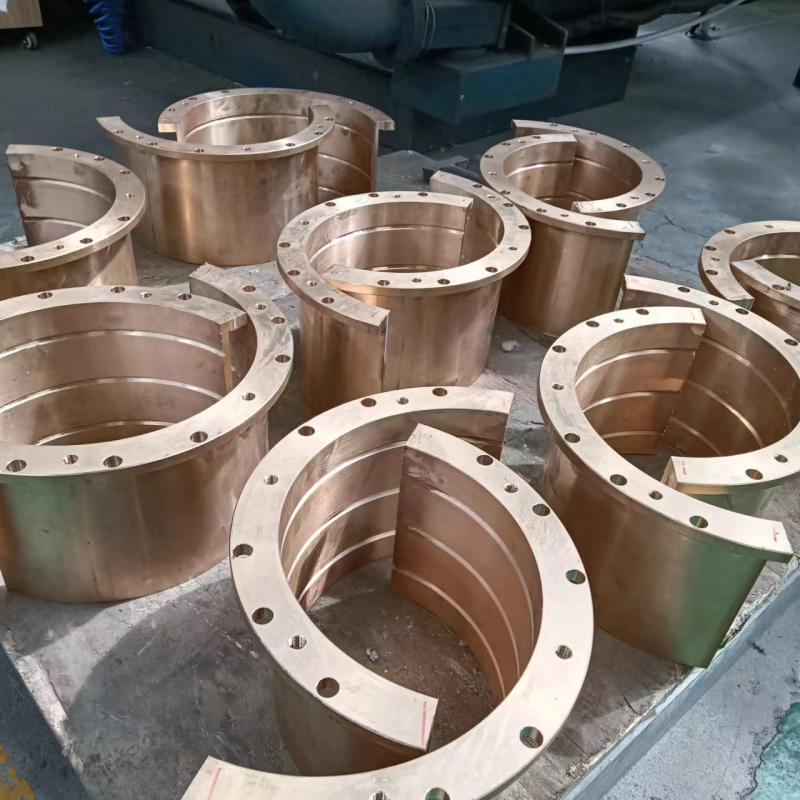The working principle of the plain bearing is mainly through the formation of a lubricating film between the journal and the shaft tile to reduce friction, reduce wear and bear the load.
Specifically as follows:
First. Formation of lubrication film
Fluid dynamic pressure lubrication:
When the journal in the shaft tile rotation, relying on the rotation of the journal to drive a certain viscosity of the lubricant into the journal and the convergence gap between the shaft tile. As the gap gradually becomes smaller, the lubricant is squeezed, resulting in dynamic pressure.
This dynamic pressure will be lifted up the journal, so that the journal and the shingle between the formation of a layer of pressure with a certain thickness of the oil film, so as to avoid direct contact between the journal and the shingle. The formation of fluid dynamic pressure lubrication requires certain conditions, such as sufficient speed of the journal, the lubricant has the appropriate viscosity, the journal and the appropriate clearance between the shaft tile.
Hydrostatic lubrication:
The lubricant with a certain pressure is forced into the gap between the journal and the shaft tile through an external oil supply device.
This type of lubrication does not depend on the rotational speed of the journal and maintains good lubrication even when the journal is stationary or rotating at low speeds. External oil supply device usually includes oil pumps, filters, regulators, etc., by adjusting the oil supply pressure and flow, you can control the thickness of the lubrication film and load-bearing capacity.

Second, load bearing
Rely on the lubrication film to withstand the load:
When the shaft is subjected to radial load, the load is transmitted to the lubrication film through the journal. The pressure distribution in the lubrication film can balance the load and keep the journal in a stable position in the shaft tile.
The load-carrying capacity of the lubricating film varies with different lubrication methods. Generally speaking, the carrying capacity of hydrodynamic lubrication increases with the increase of journal speed, while the carrying capacity of hydrostatic lubrication depends mainly on the oil supply pressure.
The supporting role of the axial tile material:
Shaft tiles are usually made of materials with a certain degree of strength and wear resistance, such as pasteurized alloys, copper alloys and so on.
In the lubrication film failure or withstand a large impact load, shaft tile materials can provide a certain support role, to prevent direct contact between the journal and the shaft tile and cause serious wear.

Third, reduce friction and wear
Lubrication film friction reduction:
The lubrication film separates the journal and the shaft tile, so that the friction between the two by dry friction into liquid friction or mixed friction, greatly reducing the coefficient of friction. The coefficient of friction in liquid friction state is usually between, much smaller than the coefficient of friction in dry friction.
Special treatment of the surface of the shaft tile:
In order to further reduce the friction and wear, the surface of the axle shingles usually undergoes special treatments, such as tin-plating, lead-plating, spraying wear-resistant materials and so on. These surface treatments can improve the wear resistance, corrosion resistance and compliance of the shaft tile, and prolong the service life of the sliding bearing.
| Previous:How does a thrust bearing work? | Next:What is the difference between a thrust bearing and a slide bearing? |




 Copyright © 2022
Copyright © 2022